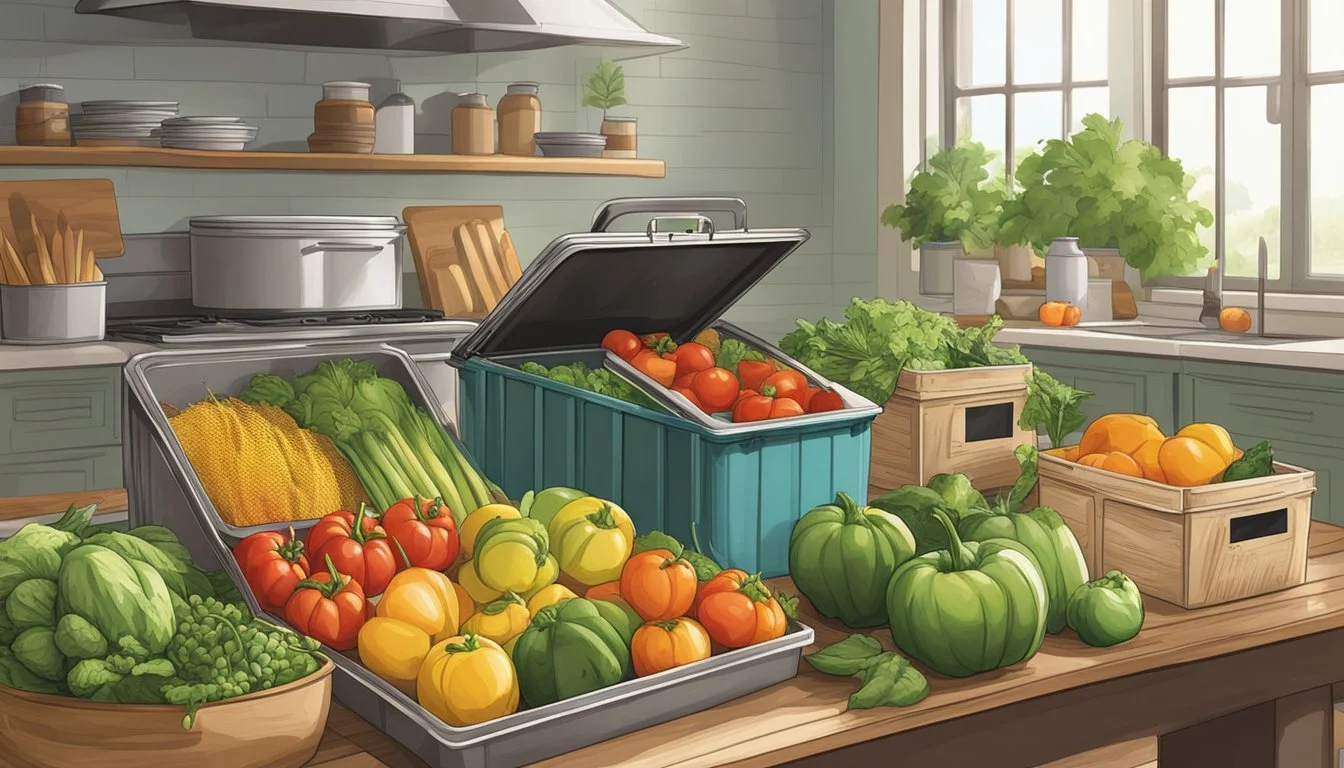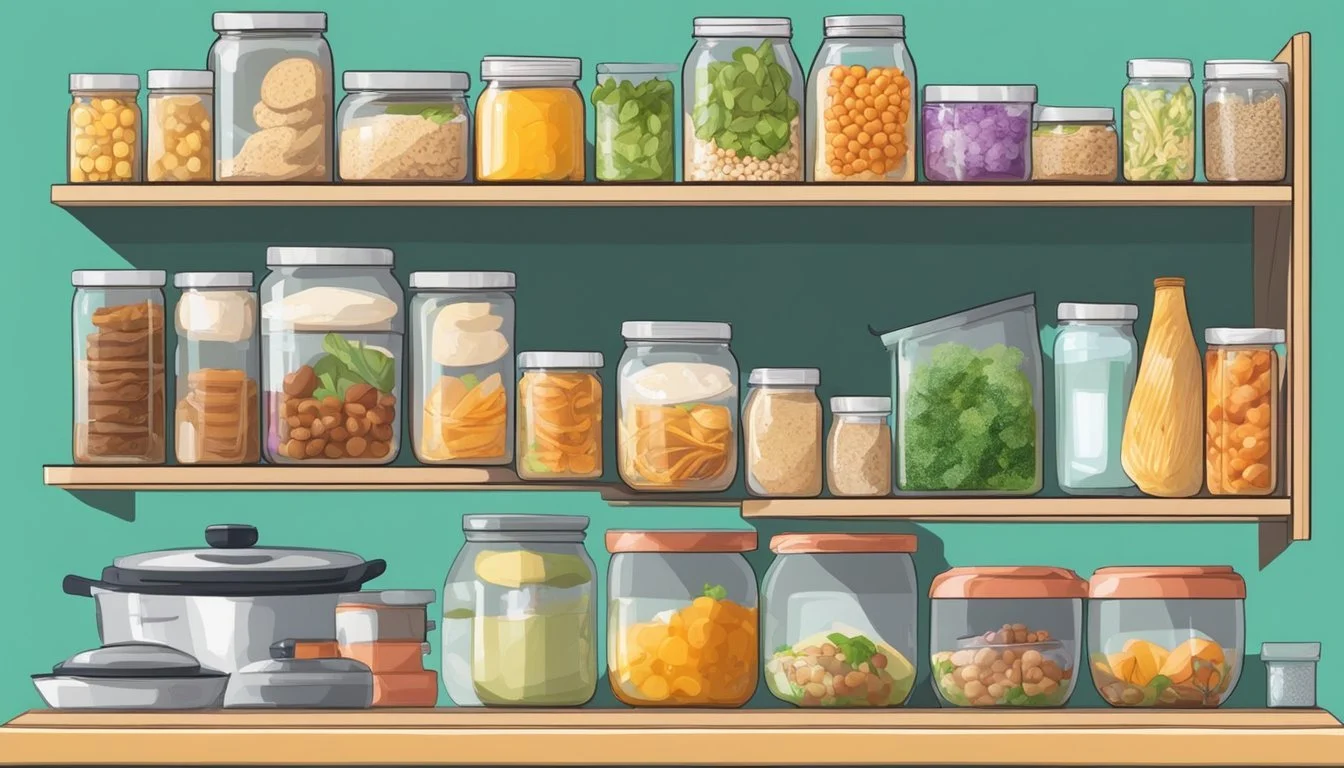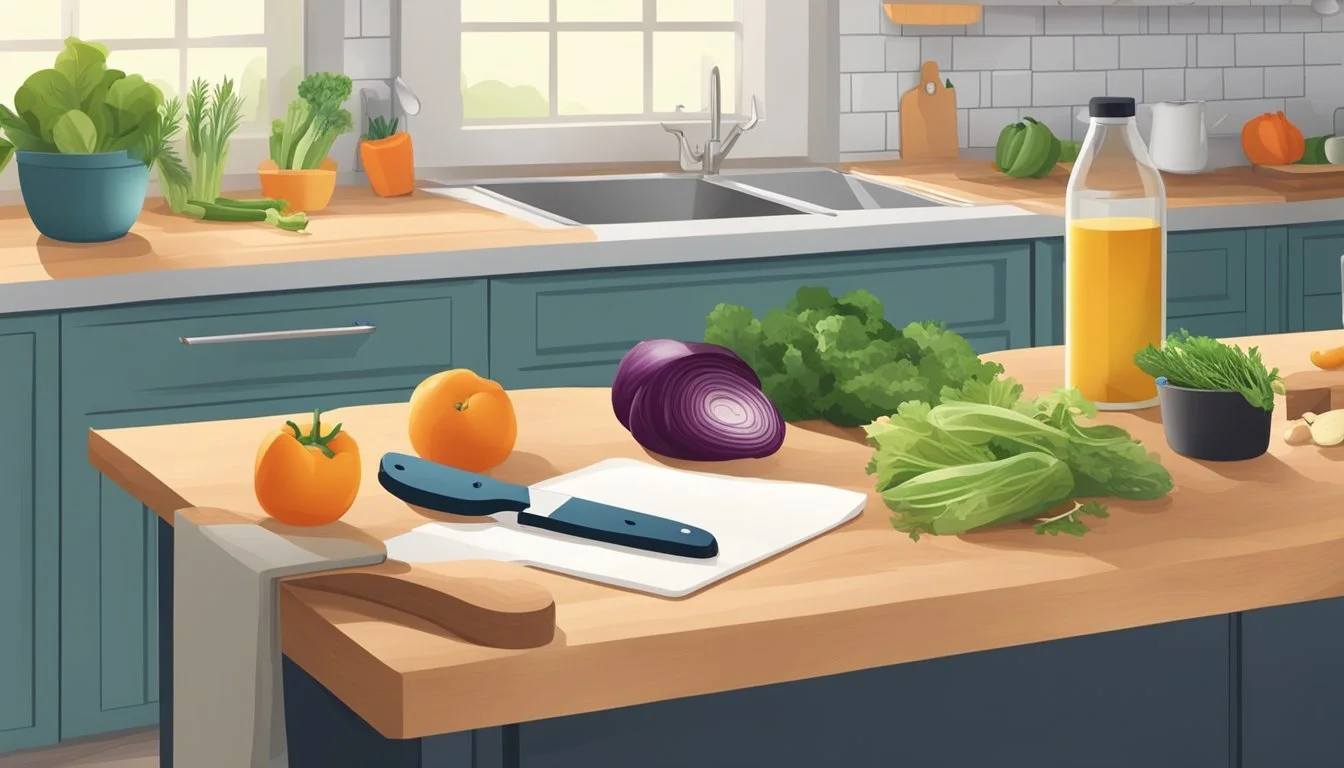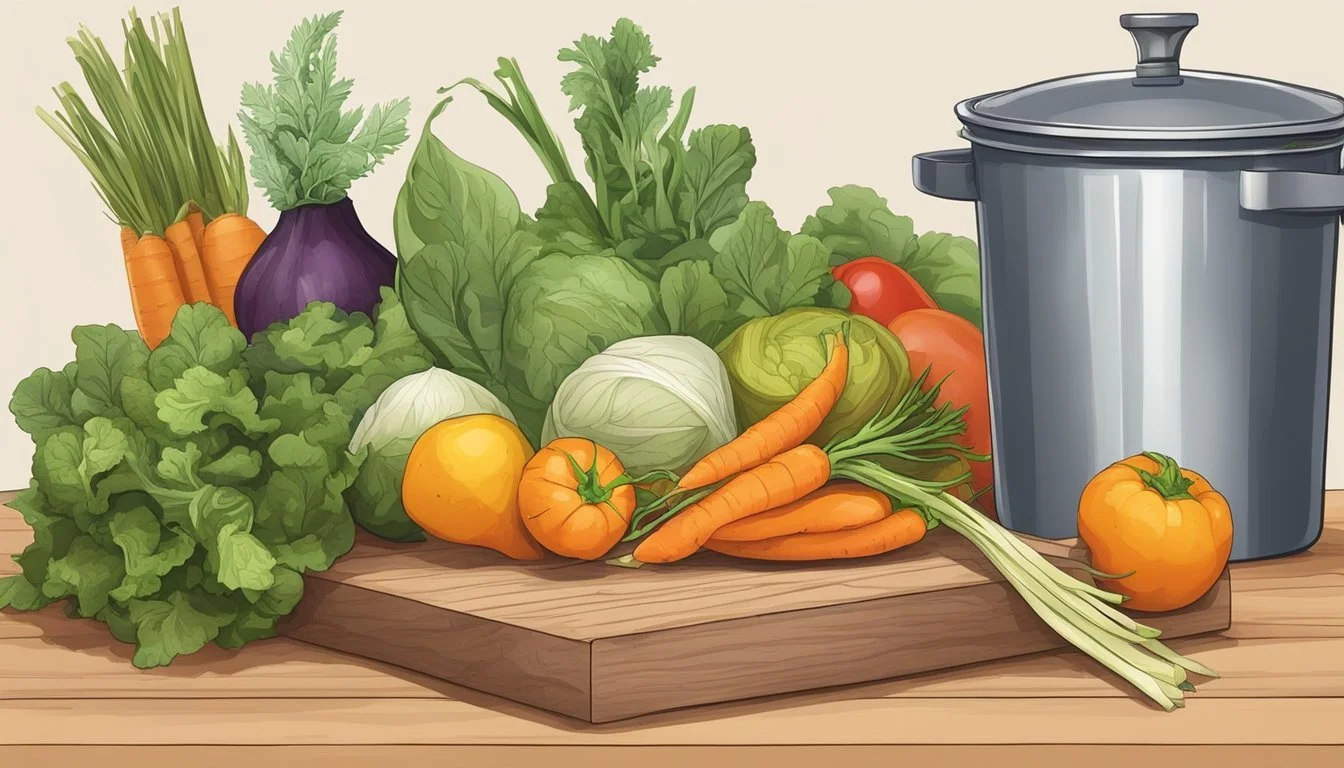How to Cook When You Want to Reduce Food Waste
Efficient Techniques for a Sustainable Kitchen
Reducing food waste is an important step in creating a sustainable environment and addressing the challenge of climate change. Every year, tons of edible food are discarded, contributing to greenhouse gas emissions and wasting the resources used to grow, transport, and package these foods. Cooking with a mindset geared towards minimizing waste not only has a positive impact on the planet but also promotes better nutrition by encouraging the use of whole foods and reducing reliance on processed ingredients.
Individuals can contribute to waste reduction in their daily routines by employing simple strategies in the kitchen. Utilizing food scraps that would typically be thrown away, such as vegetable peels or stale bread, can transform them into nutritious and flavorful components of dishes. This approach contributes not only to the household budget but also to a larger movement to conserve resources.
Adopting a "first in, first out" approach to pantry and refrigerator organization ensures that older ingredients are used before they spoil, thus avoiding unnecessary waste. This methodical way of utilizing ingredients ensures the optimal use of resources while providing wholesome nutrition, as fresher ingredients retained towards the back are preserved for later use, minimizes spoilage, and improves overall food management.
Understanding Food Waste
Food waste is not just an issue of excess; it has far-reaching consequences for the environment and can affect the nutritional value of diets. By managing food resources wisely, individuals can play a significant role in mitigating these impacts.
The Environmental Impact of Food Waste
Greenhouse Gas Emissions: When food is disposed of in a landfill, it decomposes and releases methane, a potent greenhouse gas with 28-36 times the impact on global warming over 100 years compared to carbon dioxide. Reducing waste can significantly lower these emissions.
Resource Utilization: The production of wasted food squanders a multitude of resources including water, land, labor, and energy. When food is lost or wasted, all these inputs go to waste as well, furthering environmental strain.
Nutritional Implications of Waste
Household Waste: A substantial amount of food waste occurs at the household level, leading to a loss of nutritious food that could help meet dietary needs. By minimizing waste, households can ensure more food fulfills its purpose of providing nutrition.
Compost as a Resource: While composting is a beneficial practice for repurposing organic waste, it is also critical to recognize that preventing waste is more effective than managing it post-production. Compost can enrich soil but does not recapture all the nutritional value lost when edible food is not utilized.
Strategies for Reducing Food Waste
Adopting effective strategies for reducing food waste is not only beneficial for the environment but also for household budgets. Smart shopping and efficient storage are pivotal areas where thoughtful practices can significantly minimize waste.
Smart Shopping Practices
One begins with a meal plan, organizing recipes and required ingredients for the upcoming week. This plan then informs a precise shopping list, ensuring the purchase of only necessary items. Consumers should conduct a thorough inventory of their pantry, refrigerator, and freezer to avoid duplicate purchases. While shopping, one might utilize bulk bins to buy exactly the amount needed and avoid excess, especially with perishable goods.
Meal Plan: Tailor weekly meals to utilize overlapping ingredients.
Shopping List: Confirm what’s needed by comparing against current inventory.
Efficient Food Storage
Once the groceries are purchased, the emphasis shifts to preserving their freshness. Storing food in airtight containers extends its shelf life and keeps ingredients visible. It’s essential to monitor the fridge and freezer settings; the former should stay below 40°F and the latter at 0°F. Clear labeling with dates and contents aids in using older items first. Strategic placement within the fridge ensures proper temperature regulation for different food types.
Airtight Containers: Use them to seal food and prevent spoilage.
Labeling: Mark containers with purchase or made dates to track freshness.
Implementing these targeted strategies helps individuals avoid food waste, save money, and enjoy fresher meals.
Cooking Techniques to Minimize Waste
In addressing kitchen waste, the cook can employ specific methods that transform leftovers and food scraps into appetizing meals, ensuring that every ingredient serves a purpose and that nothing goes unnoticed.
Utilizing Leftovers
Cooking with leftovers is the epitome of waste reduction, turning yesterday's meals into today's cuisine. Storing leftovers: She recommends storing leftovers in clear containers to keep them visible and top of mind. Reinvention: A chef can craft stir-fries or casseroles, for instance, using leftover vegetables, rice, or beans. Olive oil: It's the multipurpose agent that can reinvigorate the texture and flavor of leftovers when sautéed or roasted.
Making the Most of Food Scraps
From peelings to stale bread, food scraps hold untapped potential. Broth: Savvy cooks save vegetable peels, meat bones, and wilting herbs, simmering them into a rich broth. Breadcrumbs: Stale bread can be blitzed into breadcrumbs and stored for future use, adding a satisfying crunch to numerous dishes. Soup base: Wilted vegetables and the remaining bits of beans or grains become the foundation for hearty soups, bolstered by flavor and nutrition. Oil infusion: Herb stems and citrus peels infuse oils for dressings and cooking, creating a zero-waste kitchen staple.
By employing these techniques, waste can be dramatically reduced, and the utility of each ingredient maximized.
Recipe Ideas for Food Conservation
Implementing strategies for food conservation is not only environmentally responsible but also creatively rewarding in the kitchen. These recipes turn potential waste into delectable dishes, making the most of every ingredient.
Creative Uses for Overripe Fruits
Overripe fruits, particularly bananas and citrus fruits, offer a range of flavors that can enhance various recipes. Bananas, with their increased sweetness and pliability when overripe, are perfect for banana bread or pancakes. They can also be frozen and later used in smoothies, offering a rich, creamy texture. Citrus fruits past their prime can still impart a zesty flavor, making them ideal for marinades or as a brightness-adding element in salads. The zest, packed with vitamin C, can be dried and used in spice mixes or as a garnish.
Repurposing Vegetable Scraps
Vegetable scraps should never be disregarded, as they hold numerous culinary uses. Spinach stems, carrot peels, and other vegetable scraps can be collected to create a nutritious and flavorful vegetable stock. These scraps can also be added to pasta sauces or rice dishes, providing an extra boost of nutrition and texture. For instance, sautéed spinach stems can add a delightful crunch and elevate the taste profile of a dish.
Reviving Stale Grains and Breads
Stale grains and breads find new life when thoughtfully utilized. Stale bread can be processed into breadcrumbs which are excellent for adding a crunchy topping to casseroles or as a binder in meatballs. Grains like pasta, rice, or quinoa can be revived and incorporated into salads, frittatas, or as a base for fried rice dishes. Refreshing stale grains by lightly toasting them can restore their texture and make them a pleasant addition to fresh produce in a hearty grain bowl.
Sustainable Food Preservation
Sustainable food preservation extends the life of food items, reducing waste through methods like freezing and pickling, which can be done at home with minimal effort.
Freezing Techniques
Freezing is an excellent preservation method because it maintains the nutritional value and taste of food for extended periods. When freezing food, it's important to:
Portion foods before freezing, so they can be used as needed and help avoid food waste.
Use airtight containers or freezer bags to protect against freezer burn and preserve quality.
Individuals can freeze a wide variety of items including broths, which are great for soups and stews later on, as well as leftovers like gumbo or soup.
Pickling and Canning
Pickling and canning are timeless preservation methods that use acid, such as vinegar, and sugar to extend shelf-life of foods. Below are key points for each:
Pickling:
Usually done with vegetables, creating items like pickles or relished.
Important to use clean jars and follow proper canning safety procedures to prevent spoilage.
Suitable for a variety of foods, including jams made from seasonal fruits.
Requires sterilizing jars and sealing them to create a vacuum, preserving the food for months or even years.
Understanding Shelf Life and Spoilage
When cooking to reduce food waste, it's essential to comprehend shelf life and identify factors causing spoilage. This understanding ensures maximum use of ingredients and minimizes waste.
Deciphering Expiration Dates
Expiration dates on food labels can be confusing and might not always indicate the exact moment a food becomes inedible. These dates are the manufacturer's best guess as to when their product will no longer be at peak quality. It's crucial to differentiate between types of dates:
"Use by": This date is the last day recommended for the use of the product while at peak quality.
"Sell by": It tells the store how long to display the product for sale, not when food becomes unsafe.
"Best if used by": A guide to the optimal quality date, but not a safety-related deadline.
It's often safe to consume products like yogurt and chocolate after their "best by" dates, as long as there's no sign of spoilage like mold or an off smell.
Addressing Common Spoilage Concerns
Spoilage is the process by which food becomes unsuitable for consumption due to factors like:
Mold: Visible growths on food, like green spots on bread, indicating spoilage.
Insects: Their presence in grains can indicate contamination.
Storage: Improper temperature and humidity can lead to premature spoilage.
Specific foods require particular attention:
Yogurt: It should be stored in the refrigerator and kept sealed to prevent contamination.
Chocolate: Should be kept in a cool, dark place to prevent bloom—the white coating that can appear due to temperature changes, though it's still safe to eat.
Olive oil: Its shelf life can be extended by storing in a dark, cool place to prevent rancidity.
By understanding the indications of spoilage and proper food storage, one can significantly extend the shelf life of foods and cut back on waste.
Shopping and Cooking Habits
In the effort to trim food waste, careful shopping and meal preparation habits are instrumental. The way one shops at the grocery store and the strategies they employ at home can have a significant impact on reducing waste.
Avoiding Impulse Buys at the Grocery Store
Impulse buying at the grocery store often leads to excess food that goes uneaten. To counter this, shoppers should adhere to a strict shopping list that aligns with their meal plan. Another tactic is to avoid shopping on an empty stomach, which can lead to unnecessary purchases. Furthermore, exploring bulk bins allows consumers to purchase only the amount they need, thereby minimizing potential waste.
Creating an Efficient Meal Plan and Inventory
An effective meal plan is one that not only considers dietary preference and nutritional balance but also the goal of reducing waste. Planning meals around ingredients that are already on hand helps to use up what is available before it spoils. Keeping an updated inventory of pantry, refrigerator, and freezer contents is crucial. It ensures that one knows what supplies they have, reducing the chance of overbuying. Regularly updating the inventory also helps in utilizing ingredients while they're still fresh and in good condition.
Utilizing Community Resources
When aiming to reduce food waste, one can tap into community resources that provide both composting services and educational opportunities to enhance their cooking practices sustainably.
Composting Community Programs
Community composting programs offer individuals a way to dispose of their organic waste responsibly. These programs often accept scraps from households, turning them into nutrient-rich compost that is then used for local gardening and farming projects. Residents can locate their nearest composting facility via municipal websites or community bulletins. Participating in these programs not only helps reduce landfill waste but also supports local agriculture.
How to Participate:
Check local government or waste management websites for composting programs.
Separate compostable waste from other trash.
Drop off compostable materials at designated community locations.
Finding Local Cooking Classes
Local cooking classes specifically targeted at reducing food waste can greatly enhance one's culinary practices. These classes, often provided by community centers or local chefs, focus on teaching:
How to use leftovers creatively
Techniques to use the entirety of an ingredient (such as using carrot tops for pesto)
Meal planning to prevent over-purchasing
Residents should explore local educational offerings through libraries, community colleges, or culinary schools, which often advertise these opportunities on social media or their websites.
Benefits of Cooking Classes:
Skill Improvement: Learn new techniques that minimize food waste.
Community Engagement: Connect with like-minded individuals passionate about sustainable cooking.
Advocating for Change
To effectively reduce food waste, individuals can engage in collective actions that advance sustainable practices and policies. This involves supporting initiatives aimed at food redistribution and educating the community on the importance of food conservation.
Supporting Food Redistribution Initiatives
One can begin by identifying and supporting local and global campaigns that focus on redistributing surplus food to those in need. For example, events like Feeding the 5000 have become catalysts for the global food waste movement by demonstrating the potential of surplus food to address food scarcity. By partnering with farmers and retailers, these initiatives help ensure that excess produce reaches food banks, shelters, and community centers instead of ending up in landfills.
Key Actions:
Connect with food rescue organizations
Volunteer at local food redistribution events
Advocate for policies that protect donors from liability
Supporting such initiatives not only helps in tackling climate change by reducing greenhouse gas emissions from decomposing food but also enhances nutritional access for underserved populations.
Educational Efforts on Food Conservation
Education plays a critical role in shaping a society that values food resources. Engaging public and private sectors in developing educational materials and programs can raise awareness about the impact of food waste on the environment. These efforts should aim to inform consumers about:
Efficient food storage techniques to prolong freshness
Understanding date labels to prevent discarding edible food
Meal planning to minimize food loss
Strategies for educational impact:
Create workshops in collaboration with environmentally friendly organizations
Include food conservation in school curriculums
Launch public campaigns on social media platforms
Educating the population fosters a more environmentally conscious mindset, which is essential in reducing the carbon footprint and conserving valuable resources.
Conclusion
Reducing food waste is both a personal commitment and a community effort, demanding a shift in habits and comprehensive change at many levels. Individuals have the power to make impactful choices, such as planning meals, buying only what is needed, and utilizing leftovers creatively. By implementing sustainable habits like composting scraps and preserving seasonal produce, they can significantly lessen their contribution to food waste.
Communities can thrive when they educate members on the importance of conserving food and the possible ways to achieve it. By involving local businesses, schools, and organizations, a stronger, more effective strategy can be crafted. Encouragement of community gardens, cooperative buying, and sharing excess food can foster a supportive environment for waste reduction.
Adopting sustainable habits is a continual process, calling for diligence and continual self-education. Staying informed about the most effective techniques for minimizing waste and consistently practicing them can lead to lasting change. As more people and communities engage, these actions will ripple outward, creating a more sustainable world for all.








